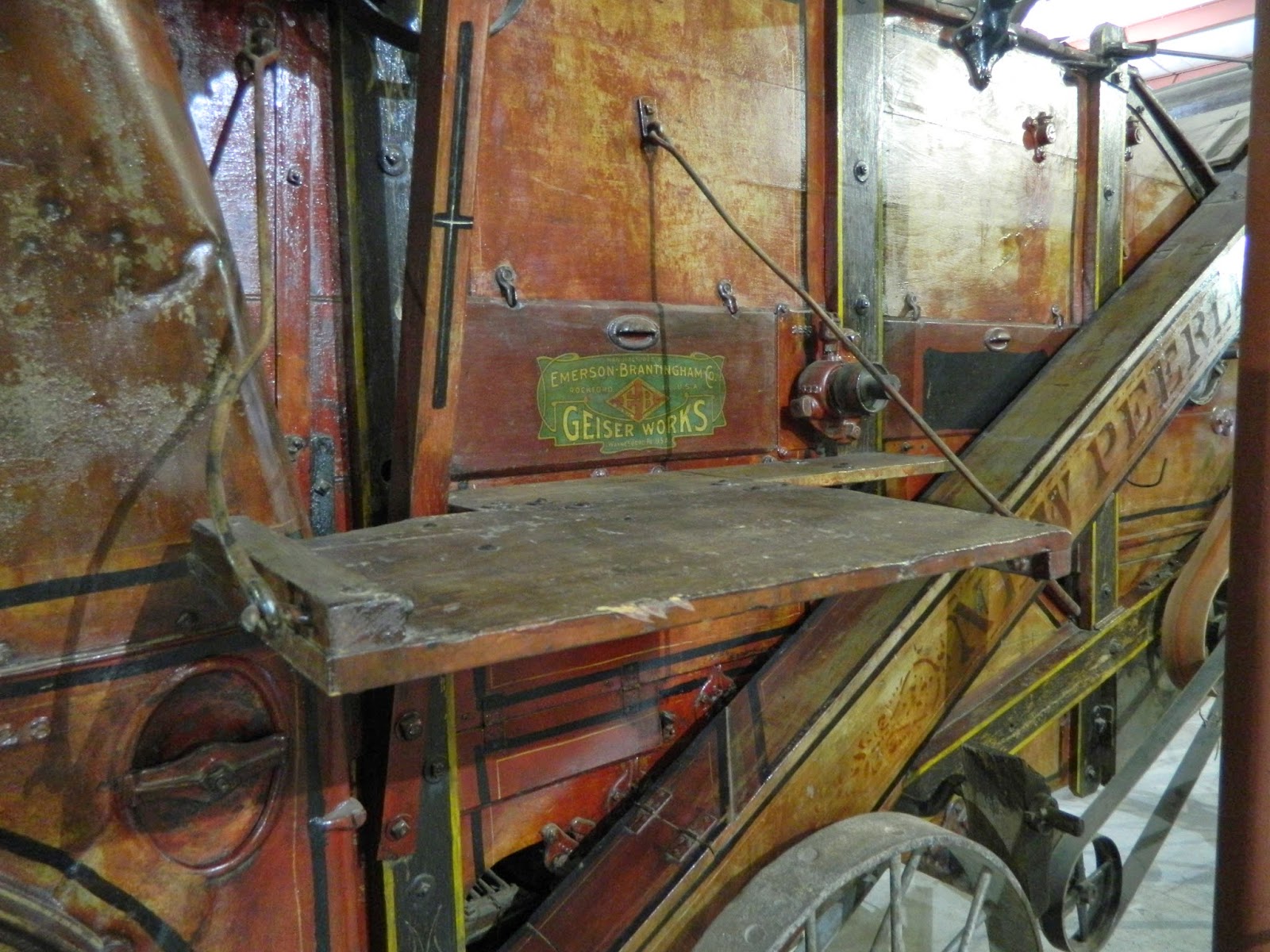A copy of Cyrus McCormick’s 1831 reaper, this replica reaper was built by International Harvester Company in 1931 to celebrate the machine’s centennial. I.H.C. made about 300 of these replicas and gave them to colleges, museums, and individuals throughout the U.S. and Canada. Many of these replica reapers were put on display for the public. Along with these replicas, I.H.C. also had a commemorative coin minted to celebrate the centennial in 1931.
Successfully tested in July 1831, the McCormick reaper was one of the most significant inventions of the 19th century. By studying this replica – you are looking at the rear from the walkway – you can see firsthand the reaper’s many significant parts. 1) It has a straight sickle bar at the front of the platform that reciprocated side to side as the reaper was pulled forward, the sickle bar being attached to the wheel axle by gears. 2) It has guards or fingers (they look like teeth) sticking out front with the sickle bar. Those guards guide the grain into the sickle bar blade and hold the grain so it gets cut cleanly and falls neatly onto the platform. 3) It has a reel that revolves, pushing the grain into the sickle bar while holding the grain heads up as the stalks get cut. 4) It has a platform to catch the grain as it falls. A person would rake the cut grain off into piles to be tied. 5) It has a wide wheel directly behind the hitched horse. That wheel is attached by gears to all of the moving parts so that it activated those parts as the reaper was pulled forward. 6) It has a line of draft wherein the horse walked on grain that had already been cut while the reaper cut standing grain. And 7) It has a divider on the side of the platform opposite the horse and wheel which neatly divided the cut grain from the standing grain.
 |
| From Reuben Gold Thwaites, Cyrus Hall McCormick and the Reaper, published in 1909. |
The original inventor of this reaper was Cyrus Hall McCormick. The great-grandson of Scotch-Irish immigrants, Cyrus was born on February 15, 1809 in Virginia. Cyrus’ father, Robert, was an inventive farmer who began working on designs for a reaper as early as 1809. After helping his father with his later reaper designs, which were mildly effective, Cyrus developed his own reaper and successfully demonstrated it, as stated above, in July 1831. After moving to Chicago in 1847, Cyrus became business partners with C. M. Gray. That partnership only lasted a few months. In October 1848, Cyrus formed McCormick, Ogden & Company along with William B. Ogden and William E. Jones. By September 1849, Ogden and Jones sold their share to McCormick, leaving him with the business.
After splitting with Ogden and Jones, Cyrus brought his brothers, Leander and William, to help him with the business, and they helped him turn his company into one of the largest in the world. After William died in 1865, Cyrus and Leander got into a series of disputes, probably relating to incidents from their long past together. On August 11, 1879, the two brothers organized McCormick Harvesting Machine Company, with Cyrus receiving three-fourths interest and Leander one-fourth. Personal problems, however, continued to plague their relationship. After Cyrus died in 1884, problems arose between Leander and Cyrus’ family. Finally, in 1890, Cyrus’ widow, Nancy, and their son, Cyrus, Jr., bought Leander’s share in the company for $3.25 million, a very large amount of money at that time. Leander died in 1900. In 1902, the McCormick heirs became part of the group that created International Harvester Company; that group included stockholders and managers of the Milwaukee Harvester Company, the Deering Harvester Company, the Plano Harvester Company, and the Warder, Bushnell & Glessner Company.
Notes
Information on McCormick can be found in C. H. Wendel, 150 Years of International Harvester (Sarasota, FL: Crestline Publishing Company, 1981).You can see McCormick's 1847 patent for his reaper, patent 5335, by clicking or touching here.




























